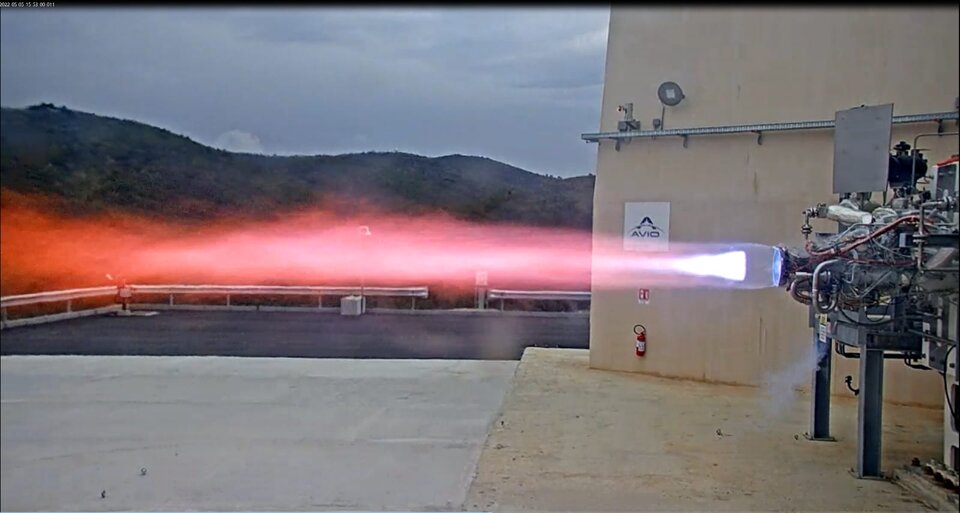M10 engine test success marks key step toward Vega-E
An innovative new rocket engine that is key to ESA’s strategy for ensuring Europe’s independent access to space has successfully completed its first hot-firing test run. M10 is the first of a new generation of “green” rocket motors tested in Europe, at the new SPTF plant (Space Propulsion Test Facility) built by prime contractor Avio in Sardinia.
The 10-t class M10 uses more environmentally sustainable propellants – cryogenic liquid oxygen and methane – and features an advanced pressure control system that enables multiple stops and restarts in space, to place several satellites in different orbits with a single launch.
The engine also makes extensive use of additive layer manufacturing technologies – so-called 3D printing – to speed up manufacturing and reduce waste and production costs.
M10 underpins Vega-E, being targeted to fly from 2026 as the next evolution of the Vega launch system. Vega-C, which is being readied for its inaugural flight by the end of June, increases the Vega performance by about 50% for the same cost. Vega-E will further increase performance while reducing launch service costs by a fifth.
M10 is not only an important feature of Vega-E, allowing Vega-C’s four stages to be reduced to just three, it is a key building block for the future generation of European rockets.
Vega-E will share with Vega-C the P120C and Zefiro-40 first and second solid-fuel stages, but replace its Zefiro-9 solid-fuel third stage and AVUM+ restartable liquid-fuel fourth stage with a single stage based on the M10 engine.
“This success, a first test of a new engine on a new test bench, is a major step, achieved on time by a great team of young and motivated engineers. With M10, Vega-E will improve performance, operational flexibility, sustainability and cost efficiency. We’re hugely encouraged by Avio’s progress with this innovative technology, on which we plan to build the future” says ESA’s Head of Space Transportation Flight Programmes Manager Stefano Bianchi.
ESA Director of Space Transportation Daniel Neuenschwander stresses the significance of this evolution: “To further increase the pace in developing leading-edge technologies and launch capabilities is a key for Europe, serving and improving a fully independent access to space. The M10 engine represents a building block on this path.”















 Germany
Germany
 Austria
Austria
 Belgium
Belgium
 Denmark
Denmark
 Spain
Spain
 Estonia
Estonia
 Finland
Finland
 France
France
 Greece
Greece
 Hungary
Hungary
 Ireland
Ireland
 Italy
Italy
 Luxembourg
Luxembourg
 Norway
Norway
 The Netherlands
The Netherlands
 Poland
Poland
 Portugal
Portugal
 Czechia
Czechia
 Romania
Romania
 United Kingdom
United Kingdom
 Slovenia
Slovenia
 Sweden
Sweden
 Switzerland
Switzerland



























